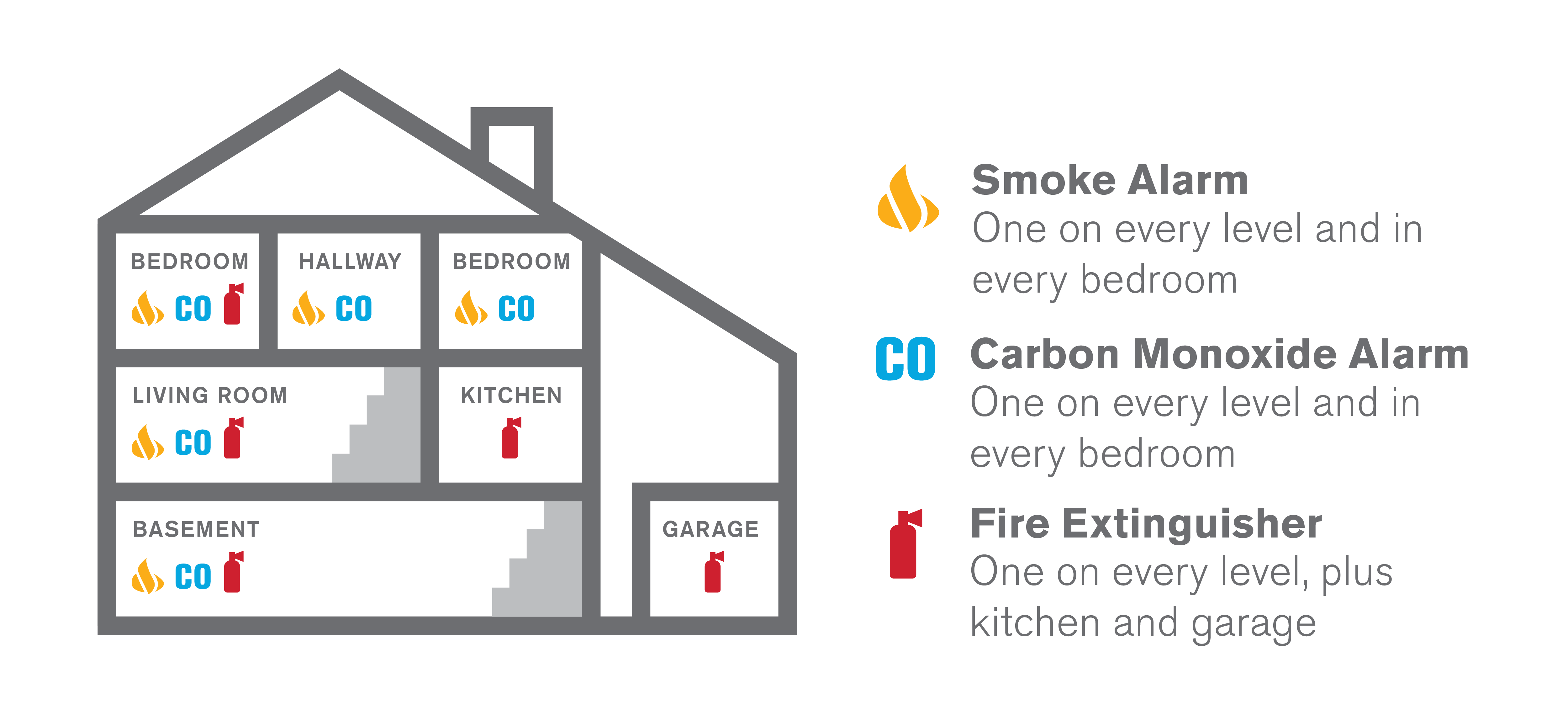Fire Extinguisher Safety tips
- Use a portable fire extinguisher when the fire is confined to a small area, such as a wastebasket, and is not growing; everyone has exited the building; the fire department has been called or is being called; and the room is not filled with smoke.
- To operate a fire extinguisher, remember the word PASS:
- Pull the pin. Hold the extinguisher with the nozzle pointing away from you, and release the locking mechanism.
- Aim low. Point the extinguisher at the base of the fire.
- Squeeze the lever slowly and evenly.
- Sweep the nozzle from side-to-side.
- For the home, select a multi-purpose extinguisher (can be used on all types of home fires) that is large enough to put out a small fire, but not so heavy as to be difficult to handle.
- Choose a fire extinguisher that carries the label of an independent testing laboratory.
- Read the instructions that come with the fire extinguisher and become familiar with its parts and operation before a fire breaks out. Local fire departments or fire equipment distributors often offer hands-on fire extinguisher trainings.
- Install fire extinguishers close to an exit and keep your back to a clear exit when you use the device so you can make an easy escape if the fire cannot be controlled. If the room fills with smoke, leave immediately.
- Know when to go. Fire extinguishers are one element of a fire response plan, but the primary element is safe escape. Every household should have a home fire escape plan and working smoke alarms.
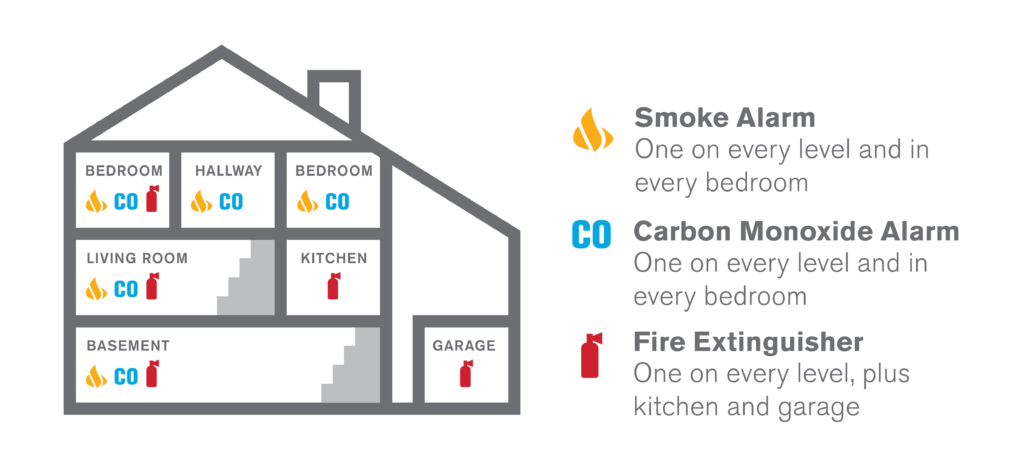 Portable Fire Extinguishers and Children
Portable Fire Extinguishers and Children
NFPA believes that children should not be trained how to operate portable fire extinguishers. Teaching children to use portable fire extinguishers runs counter to NFPA messaging to get out and stay out if there is a fire. Furthermore, children may not have the maturity to operate a portable fire extinguisher properly or decide whether or not a fire is small enough to be put out by the extinguisher. They may not have the physical ability to handle the extinguisher or dexterity to perform the complex actions required to put out a fire. In the process of extinguishing flames, children may not know how to respond if the fire spreads. NFPA continues to believe that only adults who know how to operate portable fire extinguishers should use them.
![]()
Information from nfpa.org
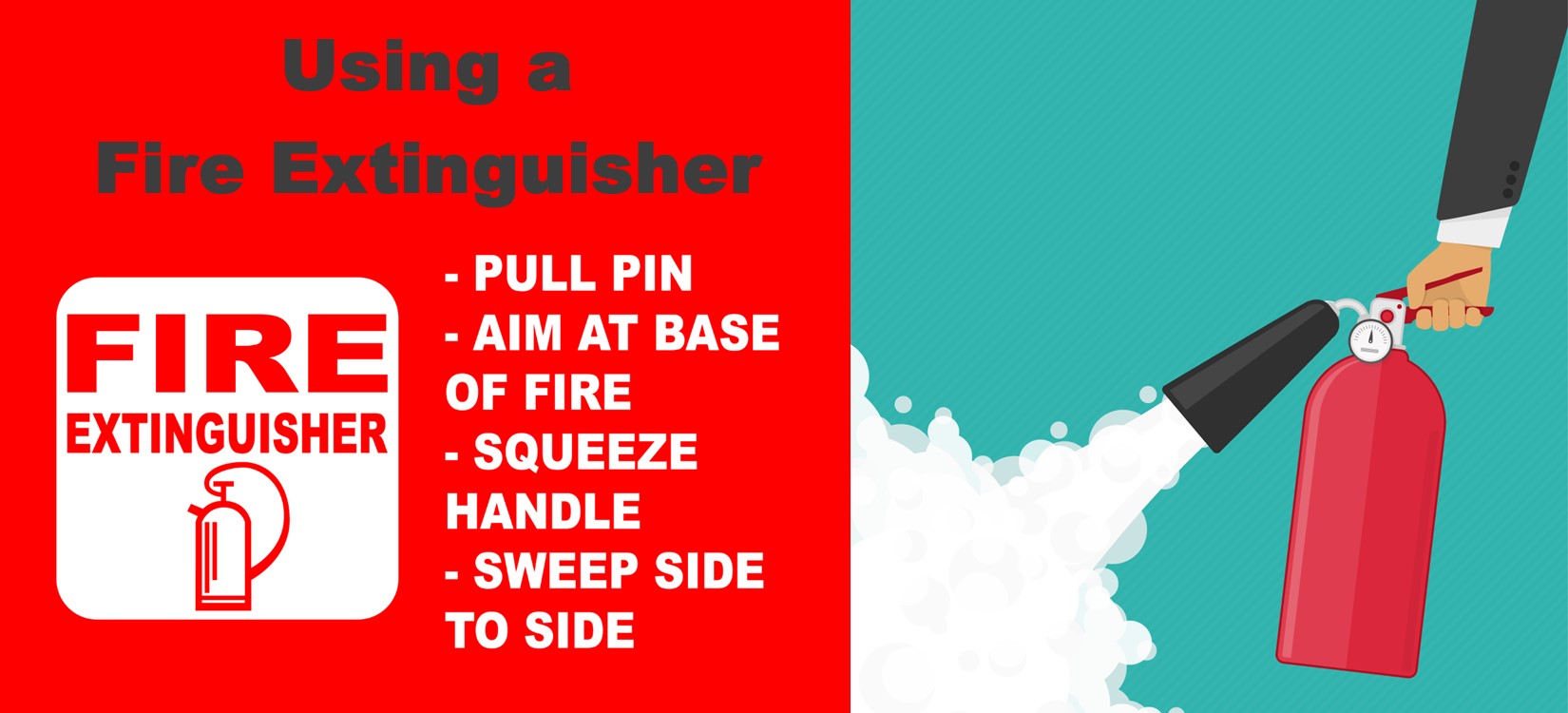
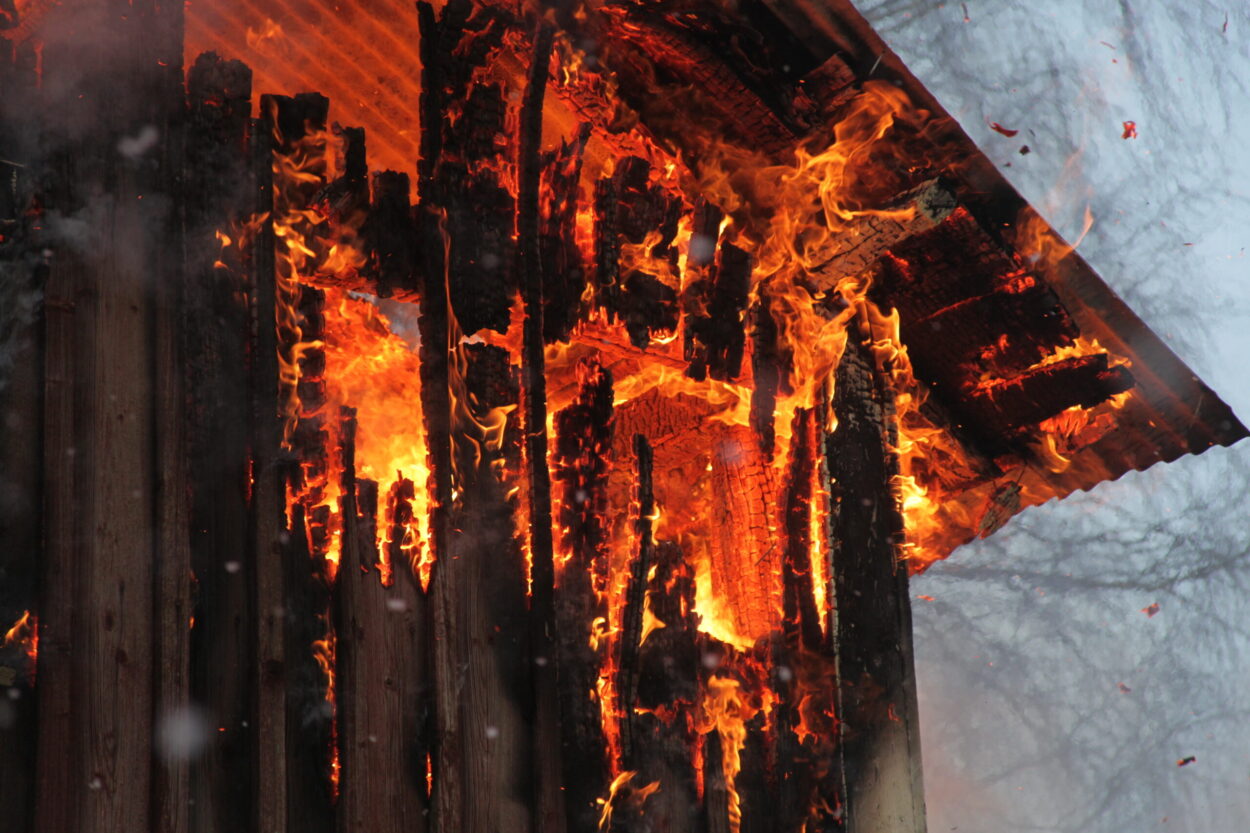

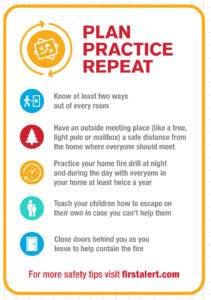 Walk through your home with your family and identify multiple exits out of each room in the house. If windows or doors are blocked, clear them so they can be easily accessed and opened to exit through. It is recommended that you have 2 exit routes from every room in your house. For two-story houses, consider equipping bedrooms with escape ladders to provide additional, safe evacuation routes. When escaping from a business building, employees should follow the escape plan procedures put in place by that business.
Walk through your home with your family and identify multiple exits out of each room in the house. If windows or doors are blocked, clear them so they can be easily accessed and opened to exit through. It is recommended that you have 2 exit routes from every room in your house. For two-story houses, consider equipping bedrooms with escape ladders to provide additional, safe evacuation routes. When escaping from a business building, employees should follow the escape plan procedures put in place by that business.
